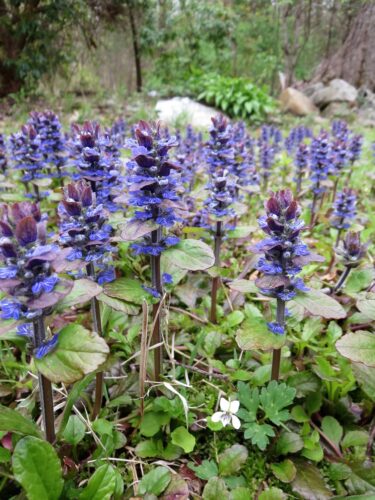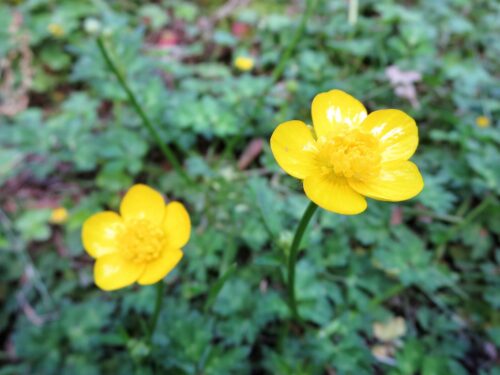


(Do you love butter? I know I do.)
They were obviously buttercups, but which kind of buttercup? The most likely types were bulbous buttercup, creeping buttercup, and meadow buttercup (a.k.a. common buttercup). I guessed that mine were creeping buttercups based on the growth pattern and appearance of the leaves, but I wasn’t sure. I tried digging one up to see if it had a bulb at the base (a telltale feature of the bulbous buttercup), but wow, the roots were strong! I finally got it mostly dug out with a stick, but by then it was so mangled that I couldn’t be quite certain.
A little more research revealed some other ways to distinguish among the buttercup types. The sepals of bulbous buttercups turn downward, and the stems of creeping buttercup are furrowed, while the stems of meadow buttercups are smooth. My buttercups have sepals turned upward and furrowed stems, which means my initial guess was probably right. Creeping buttercups are said to be extremely aggressive, hard-to-kill plants, so they’ll fit right in here, if that’s what they are.
BTW, after handling that mangled buttercup plant with my bare hands, I found out that buttercups contain a toxin that can cause contact dermatitis. I knew not to eat the things, but I didn’t realize that they could irritate the skin. Oops. Live and learn. I washed my hands thoroughly, and that’s all I can do. It’s too bad that buttercups are toxic, but I still love them, and butter!
